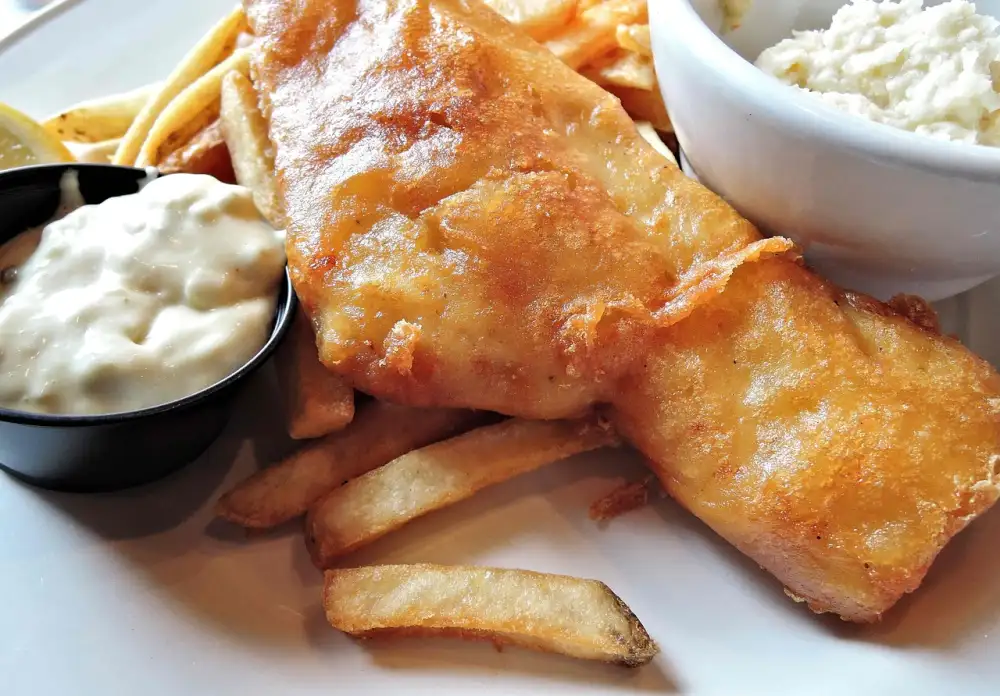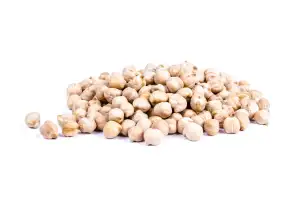Mastering the Art of Tartar Sauce: Elevate Your Seafood Dishes with this Creamy Delight

Tartar sauce is a creamy and tangy condiment that adds a burst of flavor to seafood dishes. Its smooth texture and zesty taste make it the perfect accompaniment for fish, shrimp, and other seafood delicacies. Whether you're enjoying a crispy fish fillet or indulging in succulent crab cakes, tartar sauce takes your dining experience to a whole new level. In this article, we will explore the history, ingredients, recipes, and creative variations of this delectable sauce. So get ready to elevate your seafood dishes with the art of tartar sauce!
History and origin of tartar sauce
Tartar sauce, a creamy and tangy condiment, has a fascinating history that dates back centuries. Its origin can be traced to France, where it was first created in the 19th century. The name "tartar" is believed to have been derived from the Tatars, a nomadic people who inhabited the Eurasian steppe. It is said that the Tatars introduced this sauce to Europe during their invasions.
Originally, tartar sauce was made with ingredients such as capers, gherkins, and mayonnaise. Over time, variations of the recipe emerged in different countries. In Russia, for example, it became known as "sauce tartare" and included additional ingredients like hard-boiled eggs and mustard.
Tartar sauce gained popularity in the United States during the mid-20th century when it became a staple accompaniment to seafood dishes. Today, it is widely enjoyed around the world and has become synonymous with fish and chips.
The versatility of tartar sauce has led to its incorporation into various culinary traditions. From being served alongside fried fish in England to accompanying crab cakes in America, tartar sauce has become an essential component of many seafood dishes.
As we delve deeper into mastering the art of tartar sauce, let's explore its key ingredients and traditional recipe to create this creamy delight at home.
Key ingredients used in tartar sauce
Key ingredients used in tartar sauce include mayonnaise, pickles or pickle relish, capers, lemon juice, and herbs such as parsley and dill. These ingredients come together to create a creamy and tangy sauce that perfectly complements seafood dishes. The mayonnaise provides the base for the sauce, while the pickles and capers add a briny flavor. The lemon juice adds a refreshing citrusy taste, and the herbs bring a fresh and aromatic element to the sauce.
Traditional recipe for making tartar sauce
Traditional Recipe for Making Tartar Sauce:
To make a classic tartar sauce, you will need the following ingredients: mayonnaise, pickles (preferably dill), capers, lemon juice, Dijon mustard, fresh parsley, and salt and pepper to taste.
Start by finely chopping the pickles and capers. In a bowl, combine the chopped pickles and capers with mayonnaise. Add a squeeze of lemon juice and a teaspoon of Dijon mustard for extra tanginess.
Next, finely chop some fresh parsley and add it to the mixture. Season with salt and pepper according to your taste preferences. Stir everything together until well combined.
Let the tartar sauce sit in the refrigerator for at least 30 minutes before serving. This allows the flavors to meld together and enhances the taste.
Once chilled, your homemade tartar sauce is ready to be enjoyed. Serve it alongside your favorite seafood dishes such as fish and chips, fried shrimp, or grilled salmon for a delightful burst of flavor.
Remember that this traditional recipe serves as a base, so feel free to experiment with additional ingredients like minced garlic or chopped shallots to personalize your tartar sauce.
Variations and creative twists on tartar sauce
While the traditional tartar sauce recipe is undeniably delicious, there are numerous variations and creative twists that can elevate this creamy delight to new heights. Here are a few ideas to inspire your culinary creativity:
1. Spicy Kick: Add a dash of hot sauce or a sprinkle of cayenne pepper to give your tartar sauce a fiery kick. This variation pairs exceptionally well with fried calamari or spicy shrimp.
2. Herb-infused: Experiment with fresh herbs like dill, parsley, or chives to add a burst of freshness to your tartar sauce. These herbal variations complement grilled fish or steamed lobster beautifully.
3. Zesty Citrus: Squeeze in some lemon or lime juice for a tangy twist on the classic tartar sauce. The citrusy flavor cuts through the richness and pairs perfectly with grilled salmon or seared scallops.
4. Creamy Avocado: Mash ripe avocado into your tartar sauce for a creamy and velvety texture. This variation works wonders when served alongside fish tacos or grilled shrimp skewers.
5. Sweet and Tangy: Add a touch of sweetness by incorporating pickle relish or finely chopped sweet pickles into your tartar sauce. This version adds an interesting contrast when paired with fried fish sandwiches or fish and chips.
Remember, these are just a few ideas to get you started on your journey towards culinary experimentation with tartar sauce. Don't be afraid to mix and match ingredients according to your taste preferences and the seafood dish you're serving it with. The possibilities are endless!
Best seafood dishes to pair with tartar sauce
When it comes to pairing tartar sauce with seafood, the possibilities are endless. The creamy and tangy flavors of tartar sauce complement the delicate taste of seafood perfectly. One classic combination is serving tartar sauce alongside crispy fish and chips. The rich and crunchy texture of the fish pairs beautifully with the smoothness of the sauce. Another popular option is to serve tartar sauce with grilled shrimp or prawns. The smoky flavors from the grill enhance the taste of both the seafood and the sauce. For a lighter option, try pairing tartar sauce with steamed or poached fish fillets. The light and flaky texture of the fish balances well with the creamy consistency of the sauce. Lastly, don't forget about crab cakes! Tartar sauce adds a delightful zing to these savory treats, enhancing their flavor profile even more. So go ahead and experiment with different seafood dishes – tartar sauce will elevate them all to new heights!
Tips for storing and serving tartar sauce
Tips for Storing and Serving Tartar Sauce:
1. Store tartar sauce in an airtight container in the refrigerator to maintain its freshness and prevent bacterial growth.
2. Use a clean spoon or spatula each time you serve tartar sauce to avoid cross-contamination.
3. Before serving, give the sauce a good stir to ensure that all the ingredients are well mixed.
4. Serve tartar sauce chilled alongside your favorite seafood dishes for maximum flavor.
5. If you prefer a thinner consistency, add a small amount of water or lemon juice and mix well before serving.
6. Experiment with garnishes like chopped fresh herbs or a sprinkle of paprika to enhance the visual appeal of your tartar sauce.
7. To prevent waste, make smaller batches of tartar sauce if you don't plan on using it frequently.
Remember, tartar sauce is best enjoyed when it's fresh, so try to consume it within a week of making it for optimal taste and quality.
Health benefits of tartar sauce
Tartar sauce not only adds a burst of flavor to your seafood dishes but also offers some health benefits. Made primarily from mayonnaise, tartar sauce is a good source of healthy fats, particularly monounsaturated fats. These fats can help reduce bad cholesterol levels and lower the risk of heart disease. Additionally, tartar sauce contains pickles and capers, which are rich in antioxidants that can boost your immune system and fight inflammation. However, it's important to consume tartar sauce in moderation due to its high calorie and sodium content. Enjoy this creamy delight as part of a balanced diet for a delicious and nutritious addition to your meals.
In conclusion, tartar sauce is a versatile and delicious condiment that can elevate any seafood dish. Its creamy texture and tangy flavor add a burst of freshness to every bite. Whether you stick to the traditional recipe or experiment with creative variations, tartar sauce is sure to impress your taste buds.
So go ahead and unleash your culinary creativity with tartar sauce. Try adding herbs like dill or tarragon for a unique twist, or mix in some capers or pickles for an extra punch of flavor. The possibilities are endless!
Remember to pair your homemade tartar sauce with the best seafood dishes like crispy fish and chips, succulent shrimp skewers, or grilled salmon fillets. The combination of the delicate flavors of seafood with the zesty tartar sauce will leave you craving for more.
Lastly, make sure to store your tartar sauce properly in an airtight container in the refrigerator. This will ensure its freshness and prevent any spoilage. When serving, allow it to come to room temperature for maximum flavor.
Not only does tartar sauce enhance the taste of your seafood dishes, but it also offers some health benefits. It is rich in omega-3 fatty acids from ingredients like mayonnaise and pickles, which promote heart health and reduce inflammation.
So why wait? Start experimenting with tartar sauce today and discover new ways to elevate your seafood dishes. Unleash your culinary creativity and let the creamy delight of tartar sauce take center stage on your dining table!
Published: 23. 11. 2023
Category: Food



